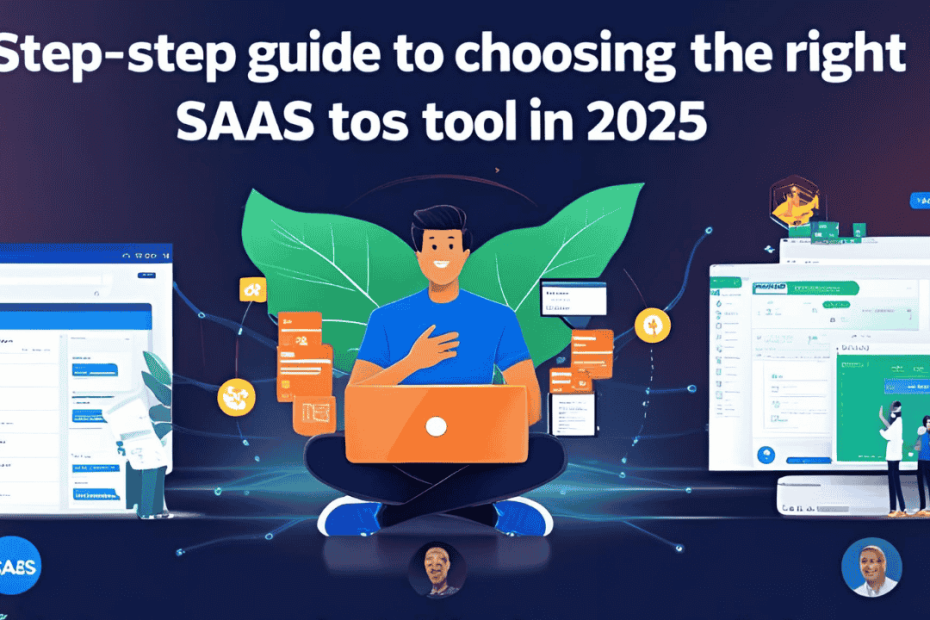In today’s fast-paced digital world, businesses heavily rely on Software as a Service (SaaS) tools to streamline operations, boost productivity, and drive growth. But with thousands of options available, how do you choose the right SaaS tool for your business?
In this comprehensive guide, we’ll walk you through a step-by-step process to help you make an informed decision. Whether you’re a startup or an enterprise, choosing the right SaaS tool can make or break your success.
What is a SaaS Tool?
SaaS (Software as a Service) tools are cloud-based software applications that users access over the internet. Unlike traditional software, SaaS solutions are subscription-based and don’t require heavy infrastructure investments.
Key Advantages of SaaS:
- Cost-effective
- Scalable
- Easy to implement
- Regular updates and maintenance
- Accessible from anywhere
Why Choosing the Right SaaS Tool Matters
Selecting the right SaaS solution ensures:
- Higher team productivity
- Reduced operational costs
- Better data security
- Scalability aligned with business growth
Wrong choices can lead to wasted resources, integration issues, and reduced employee morale.
Step-by-Step Guide to Choosing the Right SaaS Tool
Step 1: Identify Your Business Needs
Before exploring tools, understand your exact requirements.
Questions to Ask:
- What problem are we trying to solve?
- Who will be using the tool?
- What features are must-haves?
- What is the expected ROI?
Step 2: Set a Realistic Budget
Cost Factors to Consider:
- Monthly or annual subscription fees
- Implementation and onboarding costs
- Customization fees
- Upgrade or add-on costs
Remember, the cheapest tool isn’t always the best.
Step 3: Research Available Options
Use SaaS marketplaces, comparison websites, and customer reviews to shortlist potential tools.
Top Platforms to Research:
- G2
- Capterra
- TrustRadius
- Software Advice
Step 4: Check Core Features and Integrations
Ensure the tool offers:
- Core functionalities that match your needs
- Integration capabilities with your existing tech stack (CRM, ERP, communication tools)
- API access if you need custom solutions
Step 5: Prioritize Security and Compliance
Data security should be a top priority.
Look for:
- SSL encryption
- GDPR, HIPAA, or relevant compliance certifications
- Regular security audits
Step 6: Test the SaaS Tool (Free Trials/Demos)
Most SaaS providers offer free trials or live demos.
Things to Evaluate:
- User interface and ease of use
- Speed and responsiveness
- Customer support quality
- Mobile accessibility
Step 7: Analyze Scalability and Customization Options
As your business grows, your needs will evolve.
Key Factors:
- Can the tool scale with your team size?
- Does it offer customization options for workflows, reporting, etc.?
Step 8: Review Customer Support and Training Resources
Excellent support ensures smooth adoption.
Important Elements:
- 24/7 support availability
- Onboarding assistance
- Knowledge bases, webinars, and tutorials
Step 9: Read User Reviews and Case Studies
Real-world feedback reveals the tool’s true performance.
Sources:
- Verified user reviews
- Industry case studies
- Testimonials from similar-sized businesses
Step 10: Make an Informed Decision
After thorough research, trials, and analysis, finalize your decision. Involve key stakeholders for buy-in and ensure smooth rollout planning.
Common Mistakes to Avoid When Choosing a SaaS Tool
- Ignoring future scalability
- Focusing only on price
- Overlooking integration needs
- Neglecting user experience
- Not reading contract terms carefully
Bonus Tips for Selecting the Right SaaS Provider
- Look for transparent pricing models
- Choose vendors with a strong product roadmap
- Prefer providers that offer flexible contract terms
- Opt for SaaS tools with a vibrant community and third-party ecosystem
Top SaaS Trends to Watch in 2025
- AI and machine learning-powered SaaS platforms
- Increased focus on cybersecurity and compliance
- SaaS tailored for remote and hybrid work models
- Industry-specific SaaS solutions
Understanding these trends can help future-proof your SaaS investments.
Final Thoughts
Choosing the right SaaS tool in 2025 requires careful planning, research, and foresight. By following this step-by-step guide, you can confidently select a solution that aligns with your business goals, improves efficiency, and scales with your future needs.
Investing time today in finding the right SaaS tool will save you from costly mistakes tomorrow
